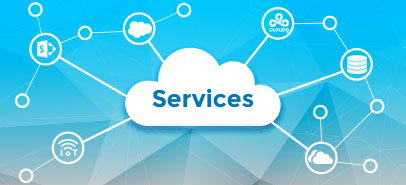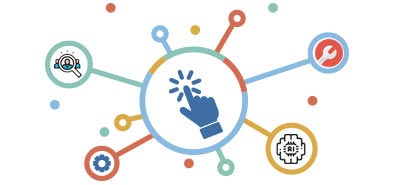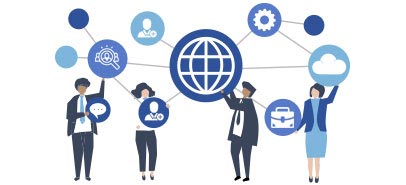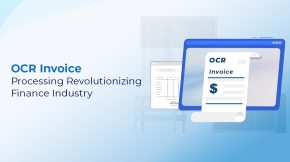Microsoft Fabric vs. Snowflake: A Detailed Comparison
If you are here, you already know about Microsoft Fabric and Snowflake. But, as data ecosystems become more complex, choosing the right platform is no longer about performance. It is about the total cost of ownership, integration complexity, hiring, and long-term strategy. So, knowing the unique features and trade-offs of Microsoft Fabric vs. Snowflake is important. This will help you find the best fit for your business. Let’s get started!
What is Microsoft Fabric? A Basic Overview
Before jumping into the Snowflake vs. Microsoft Fabric comparison, let’s review the basic capabilities of both these tools.
Microsoft Fabric is an all-in-one analytics platform. It combines data engineering, warehousing, real-time analytics, data science, and business intelligence. Everything works through a single interface and is covered under one license, all running on top of OneLake. Studies show that around 25,000 organizations worldwide, which include 67% of Fortune 500 companies, use Fabric for predictive analytics.
Here are some of the unique features of Microsoft Fabric:
- Automate tasks and reporting with Co-Pilot
- Low latency and high performance
- Generative AI capabilities to design customised assistants
- Easy governance and data security with MS Purview
- Unified data storage (OneLake) for centralized governance
- Simplified pricing and team collaboration with a unified platform
- Real-time data intelligence to get fresh business insights
- Built into the Microsoft ecosystem and works as a SaaS environment
- Fabric handles small usage spikes, balancing compute over time
What is Snowflake? Revising the Basics
Snowflake is a cloud-native data platform built for performance, scalability, and ease of use. It supports multiple clouds and excels at separating storage from compute. This tool started as a traditional data warehouse platform, but now has evolved with a lot of modern capabilities. According to Statista, the number of Snowflake active users crossed 10,600 as of October 2024, and the number has increased since then.
Here are some of Snowflake’s unique capabilities:
- Multi-cloud support and cross-region capabilities
- Granular compute pricing using “credits”
- Supports AI/ML with Python, R, and more.
- Acts like a data lake and handles all types of data
- Strong support for data sharing and collaboration
- Built-in tools for integration, ETL, transformation, and SQL-based reporting.
- Data sharing and marketplace for easy collaboration and third-party access.
- Connects with Power BI, Tableau, Qlik, and other BI tools.
A Side-by-Side Microsoft Fabric vs. Snowflake Comparison
Microsoft Fabric and Snowflake target similar high-end data analytics but with different philosophies. Let’s look at a side-by-side table of Snowflake vs. Microsoft Fabric comparison:
| Feature |
Microsoft Fabric |
Snowflake |
| Architecture |
Azure is a true SaaS lakehouse architecture platform. Unified OneLake storage (built on Azure Data Lake Gen2) combined with a lakehouse engine. All workloads (ETL, data engineering, warehousing, real-time data processing, Power BI, AI) in OneLake. |
It is a multi-cluster cloud-hosted data warehouse (SaaS). Three-layer design: a centralized storage layer (cloud data storage), independent compute clusters (virtual warehouses), and a cloud services layer for metadata/security. Runs on AWS, Azure Factory data, or GCP. |
| Data Storage Types |
Structured, semi-structured, and unstructured (via OneLake/Delta Lake). Supports data lake, lakehouse, warehouse, and eventhouse patterns natively. |
Structured and semi-structured (JSON, Parquet, Avro). Handles large-volume data with automatic compression/partitioning. Also supports variant data and limited unstructured data through external tables. |
| Integrated Workloads |
Fabric offers built-in workloads for every role. Great for:
– Data Factory (pipelines)
– Data Engineering (Spark)
– Data Science/ML
– Data Warehouse (SQL lakehouse)
– Real-Time Intelligence
– Power BI
Pre-wired capabilities to share OneLake storage and governance. |
Primarily SQL-oriented. Included: 1) Warehouses (compute), 2) Data Sharing (secure data exchange), 3) Zero-copy cloning.
Time travel helps with historical data. Snowpark works for Python and Scala. You can also integrate external ML tools. Add-ons like Snowpipe allow streaming ingestion through partners. |
| BI & Analytics |
Native Power BI integrated (Power BI is part of Fabric). Interactive dashboards and reports run directly on OneLake and Fabric SQL, often with better performance since data doesn’t have to leave the platform. Fabric also offers Copilot AI assistants for query/report generation. |
No built-in BI tool. Connects to any BI/ETL (Power BI, Tableau, Qlik, etc.). Snowflake excels at high-concurrency SQL analytics. Multiple virtual warehouses can run at the same time. This means heavy BI/report loads or many users won’t interfere with one another. Snowflake Data Marketplace enables easy data sharing and third-party datasets. |
| AI/ML Support |
Generative AI is embedded: Copilot AI-driven insights in Power BI, integration with Azure ML, AutoML modules, and Spark notebooks for data science. OneLake is AI-ready (delta tables). |
Provides Snowpark for building ML models (Python, Scala). Recently introduced Cortex (LLM functions) and partnerships for AI. Snowflake focuses on letting external ML tools access its data; ML ops are not built in as a single service. |
| Integration and Ecosystem |
Deep Microsoft ecosystem integration. Works with Azure services (Synapse, Direct Lake, Cosmos DB, etc.), Office 365/Teams, Purview governance, and on-premises via Azure connectors. Fabric customers get a “one ecosystem” of multiple data management tools. |
Cloud-agnostic connectivity: Snowflake plugs into all major clouds and many external systems. It has an extensive partner network for ETL/ELT, BI, Kafka, etc. But, these integrations are often separate projects (no single pane of glass). Snowflake does offer native data mirroring into Fabric and vice versa via open formats (Iceberg/Parquet). |
| Pricing |
Fabric offers a capacity-based pay-as-you-go or reservation pricing model. You purchase Fabric SKUs (e.g. F64, P1) that provide a pool of Fabric Capacity Units for all workloads. Power BI and big data processing share this capacity. Additional cost for OneLake storage (pay-per-GB). Reserved (1/3/5-year) discounts available. |
Consumption-based model. Separately charges: (1) Compute – virtual warehouse size × active seconds. (2) Storage – per compressed TB-month. (3) Data transfer (egress). No separate charge for metadata. Warehouses auto-pause when idle (pay per use). Serverless features (Snowpipe, Search Optimization, Cortex) incur extra credit usage. Reserve-capacity pre-purchase can lower rates. |
| Security & Governance |
Inherits Azure’s strong security framework. 1) Supports VNet isolation. 2) Offers encryption at rest and in transit. 3) Includes Azure AD authentication. 4) Uses Purview for data cataloging and classification. 5) Complies with HIPAA, SOC, and GDPR out of the box.
Purview automatically propagates sensitivity labels across all Fabric assets. |
Snowflake is built with strict security features. 1) Has always-encrypted data silos, role-based access control, and dynamic data masking. 2) Includes MFA and customer-managed keys if needed. 3) Meets many compliance standards (SOC 1/2/3, PCI DSS, HIPAA, FedRAMP, etc.) on all supported clouds.
Governance (data lineage, catalog) requires external tools or features. |
| Key Strengths |
Unified platform: End-to-end data lifecycle managed in one place. Native BI and Generative AI. Azure machine learning integration. Lower hidden ops cost if fully Microsoft-centric. |
Elastic warehouse: Best-in-class SQL performance at scale. Cloud-neutral (avoid single-cloud lock-in). Mature ecosystem and third-party apps. Finely tunable cost via auto-scaling but requires careful optimization. |
| Typical Use Cases |
Organizations with heavy Microsoft/Power Platform usage who want a single-platform solution. Rapid BI/analytics with direct connectivity to Azure data and data Teams. It is also widely used by industries using Microsoft security/governance. |
Snowflake is great for enterprises that focus on raw performance, concurrency, or a multi-cloud data strategy. Large data marts, enterprise reporting, and scenarios where Snowflake’s data sharing or third-party data integration is critical. |
Microsoft Fabric vs. Snowflake: What You Actually Need to Know
Now you understand everything about both these tools. But being aware of the functionalities is not enough to make the final verdict between Microsoft Fabric vs. Snowflake. Here are some beyond-feature considerations to guide you in selecting the right tool:
1. Fabric vs. Snowflake Total Cost of Ownership (TOC)
- Fabric often wins on simplicity and licensing transparency. This tool is for companies already using Power BI and Azure AI capabilities.
- Snowflake might look cheap on paper, but “compute credit consumption” can spike. Watch out for poorly optimized workloads or frequent queries.
To know how to spend less and get more from data, you can also read this Snowflake cost optimization blog.
Hidden Cost Example: A Snowflake customer realized 30% of their credit usage was extra. After researching, they found the extra cost was due to duplicate reporting jobs and persistent autoscaling. This was the additional cost by Snowflake over their actual user queries.
2. Operational Reality: Fabric Reduces Tool Sprawl
- Fabric consolidates multiple roles: engineering, analytics, and reporting within one pane.
- Snowflake often requires integration with dbt, Airflow, Looker/Power BI, and other tools.
Fabric is extremely convenient and powerful for large-scale businesses. Snowflake gives elastic scaling in data management.
3. Vendor Lock-In and Exit Strategies
- Fabric works on an Azure-centric approach. It might be inconvenient when you have complexes with multi-cloud or cloud-agnostic setups.
- Snowflake is built on proprietary architecture, which allows cross-cloud operations.
So, if your 2–3 year roadmap includes staying within a single cloud, Fabric is perfect for you! But if you want multi-cloud flexibility, always go with Snowflake.
4. Fabric vs. Snowflake Team Skills Requirements
- Fabric benefits teams already fluent in Azure, Power BI, and Microsoft tools.
- Snowflake requires expertise in SQL. Your teams will also need to know about data modeling, warehouse performance tuning, and closely related tools (e.g., Fivetran, dbt, etc.)
If you need efficient data management but do not have large technical teams, Microsoft Fabric is better.
Make sure to weigh Microsoft Fabric vs. Snowflake performance benchmarks. Invest in the data warehouse that perfectly fits with your company’s goals.
Performance Trade-offs and Workload Matching
Both Snowflake and Microsoft Fabrics have high performance data warehouse features. But their speciality lies in different use cases:
| Workload Type |
Winner |
| Interactive Dashboards |
Microsoft Fabric:
Microsoft Fabric offers easy Power BI integration |
| ELT/ETL Heavy Data Pipelines |
Snowflake:
Scalable compute and separation of data sources make Snowflake the winner here. |
| Data Analytics |
Microsoft Fabric:
Fabric offers wins here because of its native real-time triggers and alerts offered via Data Activator. |
| Data Sharing Safety |
Snowflake:
Snowflake wins with secure Data Sharing & Snowgrid features |
Decision Time: Is Microsoft Fabric better than Snowflake?
It depends! The Microsoft Fabric vs. Snowflake comparison is not about who is the winner. Choosing the right one totally depends on your enterprise’s needs, cloud roadmap, and team capabilities. In short:
- If you’re consolidating Microsoft tools and want full-stack simplicity, Microsoft Fabric wins. Fabric is better for teams already connected to Microsoft or Azure. They want a unified data management platform.
- On the other hand, Snowflake is more appealing to tech-savvy organizations that work on different cloud platforms. If your organization’s priority is to choose a cloud platform that is flexible and scalable, Snowflake is better for you.
Wrapping it Up
Both Snowflake and Microsoft Fabric are formidable. The key is aligning the platform with your specific needs, not the hype. Fabric is a simplified SaaS platform that brings together data ingestion, processing, warehousing, AI/ML, and Power BI reporting. Snowflake is a cloud data warehouse service. It focuses on SQL analytics. It has a mature shared-data design and separates storage from compute!
FAQs
Is Microsoft Fabric a competitor to Snowflake?
Yes! Microsoft Fabric is gaining momentum as a cloud data competitor to Snowflake. It has unique AI capabilities and a harmonious connection within Microsoft applications. Snowflake has established a reputation with its data warehousing. Now, Fabric is gaining popularity with its all-in-one solution.
Does Snowflake support data fabric?
Snowflake is mainly a warehousing data platform on Google Cloud. Yes, it is friendly to a data fabrics-style approach because it integrates diverse types and sources of data. This is not a conventional technology of a data fabric, but it provides a means of uniting data management similar to data fabric ideas.
What is equivalent to Snowflake?
In a broader cloud spectrum, you can Snowflake to data warehouses like:
- Google BigQuery
- Azure Synapse Analytics
- Microsoft SQL Server
- Amazon Redshift.
What is Microsoft’s equivalent to Snowflake in Azure?
In the Azure ecosystem, Microsoft’s equivalent to Snowflake is Azure Synapse Analytics. It integrates big data analytics and enterprise data warehousing. Azure Synapse Analytics makes all data ingestion, preparation, management, and serving a seamless experience. It meets the requirements of directly applicable BI and machine learning applications.
Is Snowflake relevant in 2025?
Yes! Snowflake is valuable even in 2025. Demand for its services is high in the market. Big corporations, such as Netflix, Capital One, Adobe, etc., use its services.
Who should not use Microsoft Fabric?
Microsoft Fabric may not be the best fit for organizations that view data analytics as a combination of various tools. It also may not work well for those relying heavily on open-source or non-Microsoft solutions.
Is Microsoft Fabric better than Databricks?
It depends! Fabric excels in an all-in-one analytics offering in Microsoft environments. But Databricks is more powerful in big data, AI, and multi-cloud elasticity.
Is Databricks better than Snowflake?
Databricks and Snowflake are both popular data platforms. The best choice depends on your needs. Databricks is more commonly preferred for complex data engineering activities and machine learning. Snowflake offers proficiency in data warehousing, structured data, and simple analysis.
Who is Databricks’ Biggest Competitor?
Databricks faces tough competition from several key players, including:
- Snowflake
- Amazon Redshift
- Google BigQuery
- Microsoft Fabric
- Azure Synapse Analytics.












